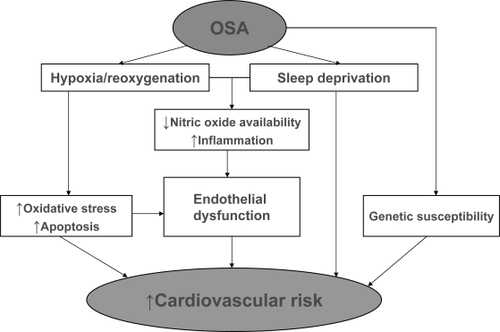Figures & data
Figure 1 Intermediary mechanisms that mediate increased cardiovascular risk in obstructive sleep apnea (OSA). Repetitive hypoxia/reoxygenation associated with transient cessation of breathing while asleep promotes endothelial dysfunction in patients with OSA by increasing vascular inflammation, oxidative stress and apoptosis while reducing nitric oxide availability. Sleep fragmentation and deprivation resulting from repetitive arousals during sleep compound the effects of hypoxia/reoxygenation injury by independently promoting vascular inflammation. Genetic susceptibility may contribute to cardiovascular risk associated with OSA.
